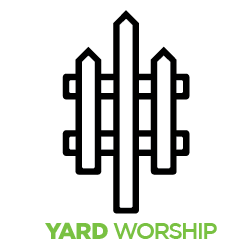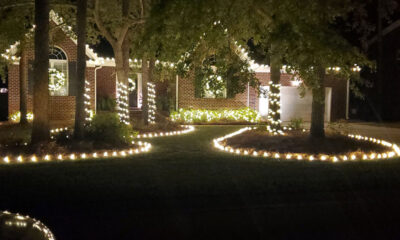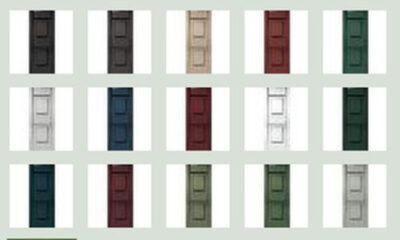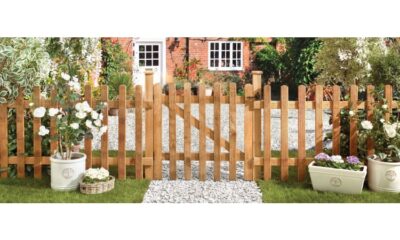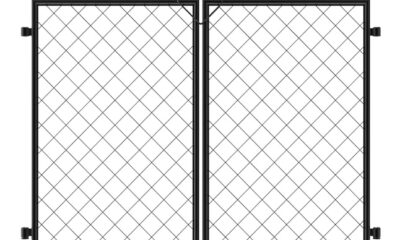Garden Fencing For Privacy
The Dos and Don’ts of Installing Vinyl Fencing

If you’re considering installing vinyl fencing on your property, there are several things to consider before making the final decision. These include the Dos and Don’ts of installing a vinyl fence, the costs involved, and alternative options. Read on to find out more. There are many benefits to vinyl fencing, but there are also some drawbacks.
Dos and don’ts of installing vinyl fencing
One of the most important steps in installing a vinyl fence is to line up the posts correctly. This is often a difficult process, but if done correctly, it will eliminate much of the guesswork. Before installing the posts, you should stretch the string line between the posts to ensure they are aligned perfectly. Then, use this line as a guide to place the middle posts.
When installing a vinyl fence, make sure that you have all the necessary tools and experience to complete the project. If you don’t have the tools and experience necessary, you may want to hire a professional to assist you. While installing a vinyl fence can be a laborious process, it can be quite easy once you have the right tools. Setting the posts correctly is important for the integrity of the fence. Make sure the posts are perfectly spaced and level. Once you’ve set the posts, you’re ready to begin installing the panels.
Waterproofing wooden posts is important to avoid water saturation. The waterproofing process may prolong the life of wooden posts and improve their durability. There are a number of ways to waterproof wooden posts, including using shrink wrap or paint. Although this may seem like a simple solution, it may result in a weakened material that can be easily damaged by a hammer, knife, or other objects flying through the air.
Cost of installing vinyl fence
If you’re considering installing a vinyl fence on your property, you’ll want to consider the cost of the materials as well as labor. Labor costs can range from $5 to $10 per linear foot, or from $35 to $50 per hour. Although labor is an important part of installing a vinyl fence, it is also a relatively small portion of the total cost. The cost of the materials far outweighs the cost of labor. In addition, you’ll need to pay for a permit to install a fence along your property line. Permits range anywhere from $20 to $400 and can be arranged by the fence installer.
Another thing to consider is whether or not you can paint your vinyl fence yourself. While you can hire a professional to paint your vinyl fence, keep in mind that paint won’t last as long as it would on wood. Since the plastic is smooth, paint won’t adhere properly and will eventually peel off. Moreover, you may void the warranty on the fence if you do it yourself. It’s best to discuss this with your installer before you begin.
Vinyl fence costs vary depending on the design and the location of the fence. A typical 100-foot-long privacy fence would cost around $1,500. On the other hand, a picket-style fence would cost between $350 and $6,000. The cost of installing vinyl fencing varies depending on the materials, height, number of posts, slope, and permit.
Alternatives to traditional vinyl fence installation
Vinyl fences are durable and require minimal maintenance. You can simply spray a garden hose on your vinyl fence to keep it clean and free of dust and moss. If you don’t have time to do the work yourself, there are companies that install vinyl fences for an affordable price. A vinyl fence can mimic various materials and have an attractive design.
Before installing a vinyl fence, you need to prepare the area. Make sure that no stationary objects are in the way. It’s also a good idea to mark the underground utility lines in your area. You can also use an online mapping tool to accurately measure the area before installing the fence.
Vinyl is one of the most durable materials available. It is five times stronger than wood and is completely resistant to corrosion. It also contains titanium dioxide, an effective UV inhibitor. Another benefit of vinyl is that it provides complete privacy. Many vinyl fence companies use one-piece panels or interlocking panels to ensure that your privacy is preserved.
Another advantage of vinyl is its low maintenance requirements. Unlike wood, it doesn’t need to be painted or stained, and it does not scratch easily. It is also easy to clean. Because vinyl is non-porous, it can be hosed down to keep it looking like new. It’s also safe for children and pets. Moreover, vinyl fences do not cause splinters and don’t rot.
Did you miss our previous article…
https://yardworship.com/how-to-use-inexpensive-fence-decor/

